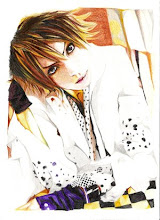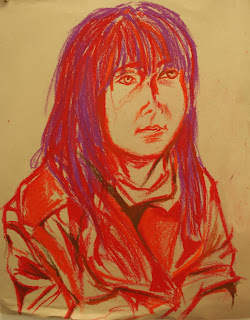An example of a layout. Drawing simple thumbnails like this gives me a rough idea on how the layout should look; where would the picture best be suited on a page and how the text should accompany it. There are many kinds of layout depending on the size of the illustration and text. For a book or magazine, a double page spread is commonly used.
After much brainstorming and coming up with ways to present it, (including scanning it and working on Photoshop to create a page cover) I decided to maintain the traditional form of it using basic materials like inks and watercolour.
I worked on a large scale for the final outcome, the drawing was done on an A3 water colour paper. As for the accompanying text, I experimented with different calligraphy techniques with quills and dip-pen onto different surfaces like drawing cartridge, tracing paper and calligraphy paper.
My experiments can be found in my sketchbook.







.jpg)

.jpg)


.jpg)

.jpg)











































